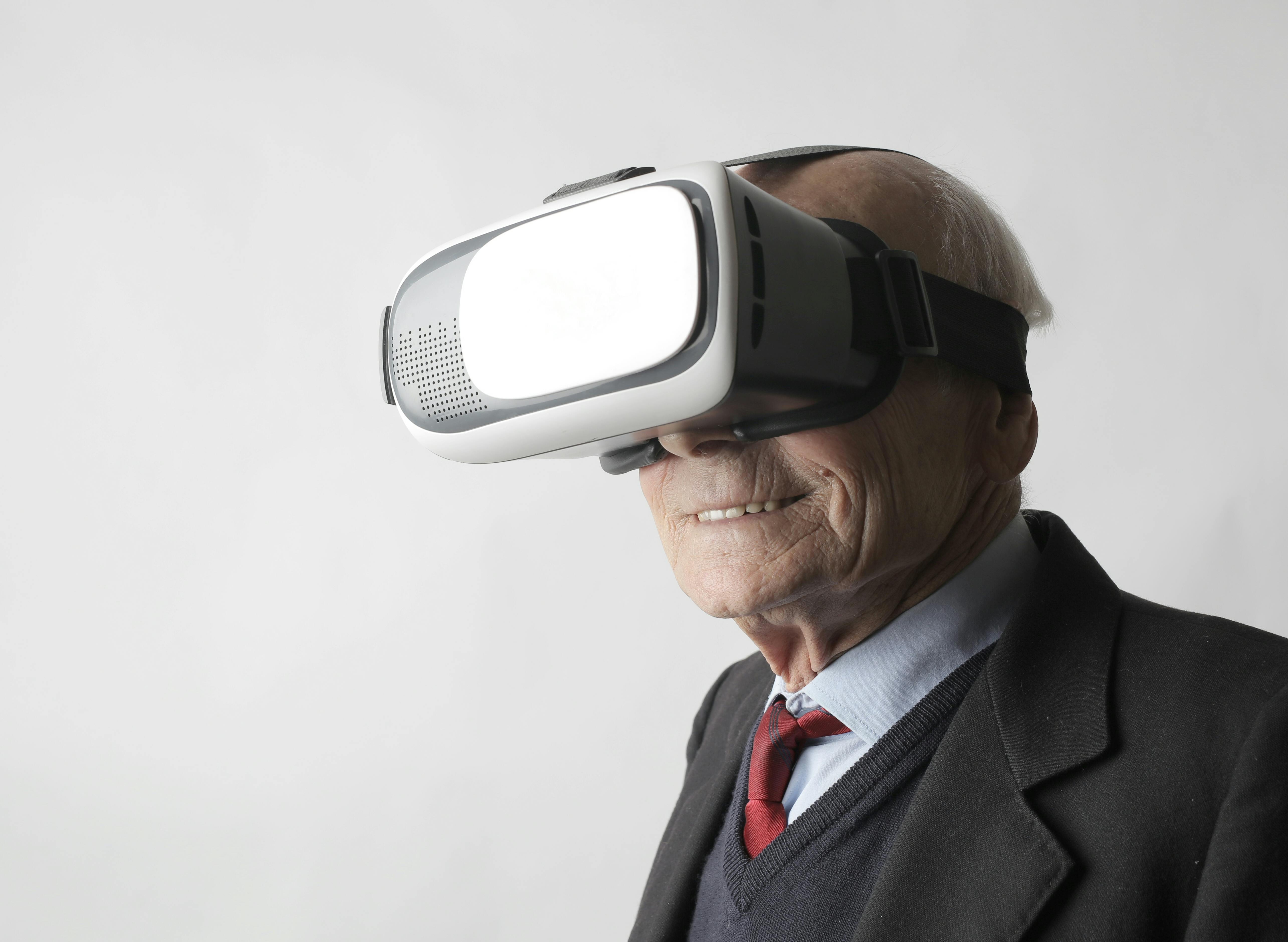Have you ever wondered how fitness wearables are able to track and analyze your heart rate zones? It’s fascinating to think about the technology behind these devices and how they are able to provide us with valuable information about our health and fitness. In this article, we will explore the science behind fitness wearables and uncover the secrets behind their ability to track and analyze heart rate zones. So, get ready to dive into the world of fitness tracking technology and discover how these devices are helping us on our journey to better health and wellness.

Heart Rate Zones
Definition
Heart rate zones refer to different ranges of heart rate that indicate various levels of intensity during physical activity. These zones are used to guide individuals in optimizing their fitness routines and achieving specific training goals. By monitoring and analyzing heart rate data, fitness wearables can provide valuable insights into an individual’s workout intensity and overall cardiovascular health.
Importance in Fitness
Understanding heart rate zones is essential in fitness because it helps individuals tailor their workouts to their specific goals. By working out in different heart rate zones, you can target different areas of improvement, such as endurance, fat burning, and reaching cardiovascular fitness goals. By tracking heart rate zones, you can also monitor your progress over time and make adjustments to your fitness routine as needed.
Different Heart Rate Zones
There are typically five different heart rate zones that fitness wearables track and analyze:
Resting Heart Rate Zone: This is the lowest heart rate zone, which represents your heart rate at rest. It serves as a baseline for monitoring your cardiovascular health.
Fat Burning Zone: This zone corresponds to a moderate intensity where the body primarily burns fat for fuel. It is an ideal zone for burning calories and losing weight.
Cardio Zone: This zone is characterized by a higher intensity where you are working at approximately 70-80% of your maximum heart rate. It improves cardiovascular endurance and aerobic capacity.
Peak Performance Zone: This zone represents the highest level of intensity where you are working at approximately 80-90% of your maximum heart rate. It is used for high-intensity interval training (HIIT) and improving athletic performance.
Recovery Zone: This zone is the lowest intensity zone and is used for active recovery and cooldown after intense workouts. It promotes circulation, reduces muscle soreness, and aids in recovery.
By monitoring your heart rate in these different zones, fitness wearables can provide valuable feedback on your workout intensity and help you achieve your fitness goals more effectively.
Wearable Technology
Introduction to Fitness Wearables
Fitness wearables, such as fitness trackers and smartwatches, have become increasingly popular tools for monitoring health and fitness. These devices typically include a variety of sensors and features that track and analyze various aspects of your physical activity, including heart rate.
Fitness wearables have evolved to provide users with comprehensive data about their workouts, such as heart rate, steps taken, distance traveled, calories burned, and more. They are designed to be worn comfortably on the wrist and are often equipped with displays that make it easy to view your fitness metrics in real-time.
Heart Rate Monitoring Sensors
Heart rate monitoring is one of the key features of fitness wearables. These devices employ various sensors to measure and track heart rate accurately. The most commonly used sensors for heart rate monitoring in wearables are optical sensors.

Optical Heart Rate Monitoring
Principle of Operation
Optical heart rate monitoring works by using light to measure the blood flow and the subsequent changes in blood volume beneath the skin. This technology is based on the principle of photoplethysmography (PPG), which measures the light absorption and reflection by the blood vessels.
LED Sensors
LED sensors emit light at specific wavelengths, typically green or red, that is absorbed or reflected by the blood vessels in the skin. The amount of light absorbed or reflected changes as blood volume and flow changes with each heartbeat. This data is then used to calculate heart rate.
Photodiode Sensors
Photodiode sensors detect the amount of light that reaches them after being transmitted through the skin. They measure the variations in light intensity caused by changes in blood volume, allowing for accurate heart rate measurement.
Data Processing Techniques
To ensure accurate heart rate tracking, fitness wearables employ sophisticated algorithms to process the data collected by the optical sensors. These algorithms analyze the changes in light absorption or reflection and convert them into heart rate measurements. They also account for factors such as motion and noise to provide reliable and precise heart rate data.
Fitness Wearable Algorithms
Basics of Algorithm
The algorithms used in fitness wearables play a crucial role in interpreting heart rate data and categorizing it into different heart rate zones. These algorithms take into account factors such as age, sex, weight, resting heart rate, and user profile information to calculate heart rate zones accurately.
Machine Learning Algorithms
Many fitness wearables now incorporate machine learning algorithms that continuously learn from user data to provide more accurate and personalized heart rate zone calculations. These algorithms analyze patterns in heart rate data, identify individual trends, and make adjustments to heart rate zone calculations based on the user’s unique physiological response to exercise.
Heart Rate Zone Calculation
Based on the data collected and processed by the algorithm, fitness wearables determine the heart rate zone in which the user is currently exercising. This information is typically displayed on the wearable device in real-time, allowing individuals to monitor their workout intensity and modify their exercises accordingly.

User Input and Biometrics
User Profile and Information
To provide accurate heart rate zone calculations, fitness wearables require user input and biometric information. Users typically input their age, sex, height, weight, and sometimes additional personal information, such as fitness goals or health conditions. This information helps the wearable device personalize heart rate zones based on the individual’s unique characteristics.
Personalizing Heart Rate Zones
By taking into account user profile information, fitness wearables can personalize heart rate zones to suit individual fitness goals and capabilities. For example, a younger individual may have a higher maximum heart rate, resulting in different heart rate zones compared to an older individual. Personalized heart rate zones allow for a more tailored and effective workout routine.
Additional Biometric Data
In addition to heart rate, fitness wearables can collect and analyze other biometric data, such as sleep patterns and stress levels. By combining heart rate data with these metrics, users can gain a more comprehensive understanding of their overall health and well-being. This information can guide individuals in making lifestyle changes and improving their overall fitness and wellness.
Heart Rate Variability
Definition
Heart rate variability (HRV) is a measure of the variation in time intervals between consecutive heartbeats. It provides insights into the autonomic nervous system and reflects the body’s ability to adapt to different stressors. HRV has been found to be a useful indicator of overall health and fitness.
Measurement Techniques
Fitness wearables use various measurement techniques to analyze HRV. These include analyzing the R-R intervals from an electrocardiogram (ECG) or using photoplethysmography (PPG) from optical sensors to detect changes in pulse transit time or blood volume for HRV calculations.
Using HRV for Assessing Training Intensity
By monitoring HRV, fitness wearables can assess an individual’s level of recovery and readiness for high-intensity workouts. HRV data can help determine when it is appropriate to push harder during training or when rest and recovery are needed. Monitoring HRV can optimize training programs and prevent overtraining or undertraining.

Validation and Accuracy
Comparison with Medical Devices
Fitness wearables have undergone extensive validation studies to ensure accuracy and reliability. Although they may not be as accurate as medical-grade devices, they have shown consistent results across a wide range of activities and population groups. They provide valuable insights and trends for individuals tracking their heart rate zones and overall fitness.
Factors Affecting Accuracy
Several factors can affect the accuracy of heart rate tracking in fitness wearables. These include the fit and placement of the device on the wrist, skin characteristics, motion artifacts during exercise, and interference from exercise equipment. It is crucial to ensure a snug fit and proper positioning of the wearable device to achieve the most accurate heart rate readings.
Challenges and Limitations
Skin Characteristics
The optical sensors used in fitness wearables can be affected by skin characteristics such as pigmentation, skin thickness, and tattoos. Darker skin tones, for example, may absorb more light, potentially affecting the accuracy of heart rate measurements. Manufacturers continually work to improve their algorithms to account for these variations and provide accurate results for individuals with different skin characteristics.
Movement Artifacts
During intense workouts or high-impact activities, motion artifacts can interfere with accurate heart rate tracking. This interference may result in temporary spikes or drops in heart rate readings. However, fitness wearables are designed with algorithms that attempt to filter out these artifacts and provide more reliable heart rate data.
Interference from Exercise Equipment
Some exercise equipment, such as stationary bikes or rowing machines, may produce vibrations or electromagnetic fields that can interfere with the heart rate monitoring capabilities of fitness wearables. Although manufacturers strive to minimize these interferences, it is essential to be aware of potential inaccuracies when using fitness wearables in conjunction with certain exercise equipment.
Integration with Smartphones and Apps
Wireless Connectivity
Fitness wearables often have built-in wireless connectivity, such as Bluetooth, that allows them to sync with smartphones and other devices. This connectivity enables real-time monitoring of heart rate zones and provides access to detailed workout data and analytics on compatible apps.
Data Synchronization
When connected to smartphones or other devices, fitness wearables automatically sync and transfer data collected during workouts. This data synchronization allows individuals to view their heart rate zone data, track their progress, and analyze their fitness metrics over time.
Third-Party App Integration
Many fitness wearables can integrate with third-party fitness apps, such as Strava or MyFitnessPal, allowing users to consolidate and analyze their heart rate zone data alongside other fitness metrics. This integration provides a more holistic view of an individual’s overall fitness and helps streamline the tracking and analysis process.
Conclusion
Summary of Heart Rate Tracking and Analysis
Fitness wearables have revolutionized the way individuals track and analyze their heart rate zones. By employing optical heart rate monitoring sensors and advanced algorithms, these devices provide accurate and personalized heart rate tracking. By understanding and optimizing heart rate zones, individuals can achieve their fitness goals more effectively and monitor their cardiovascular health.
Future Trends and Innovations
As technology continues to advance, fitness wearables are likely to become even more sophisticated and accurate in heart rate tracking and analysis. Additionally, advancements in machine learning and artificial intelligence will lead to more personalized and precise heart rate zone calculations. Integration with other health-tracking technologies, such as sleep monitoring and stress analysis, may further enhance the capabilities of fitness wearables in the future.

